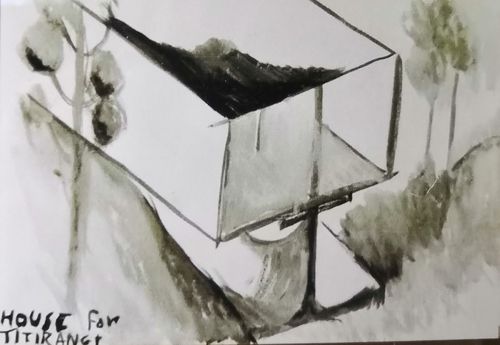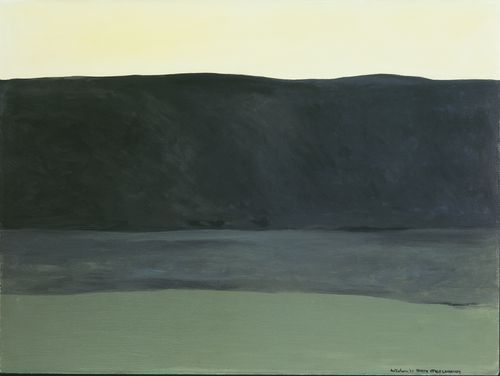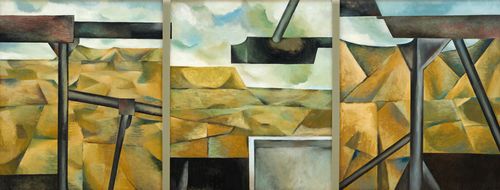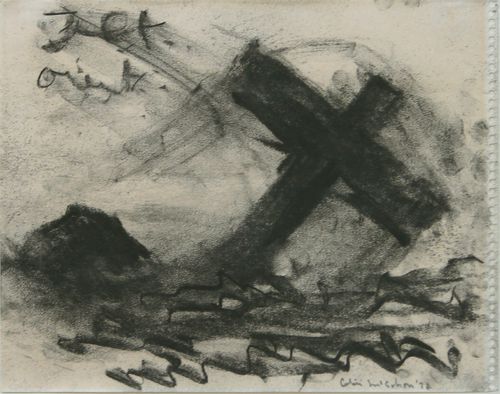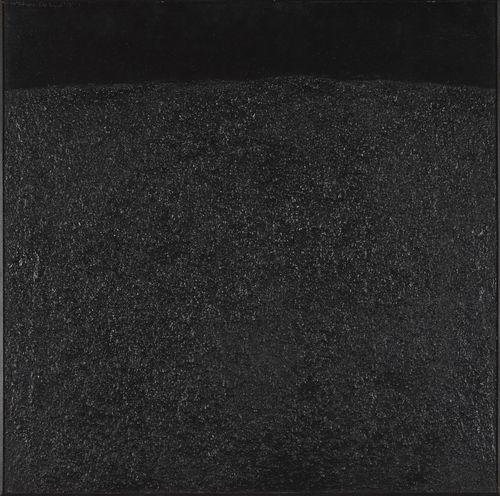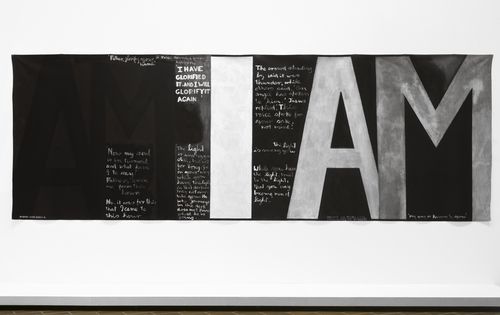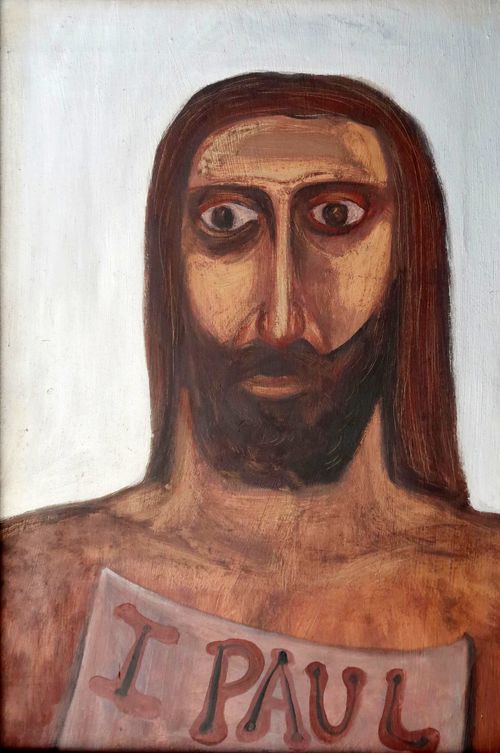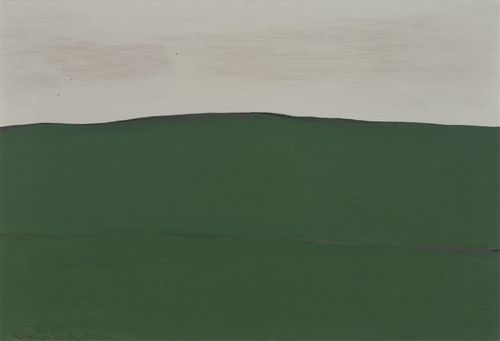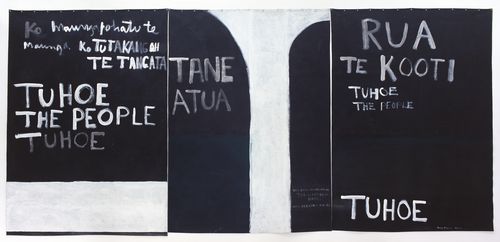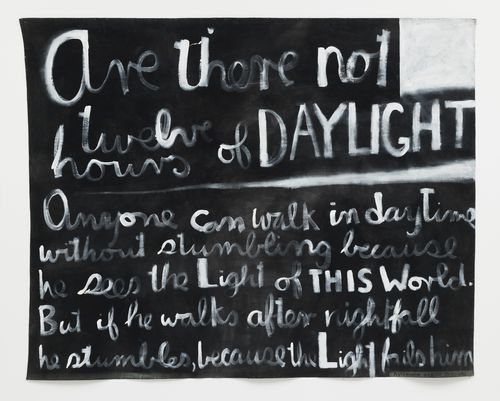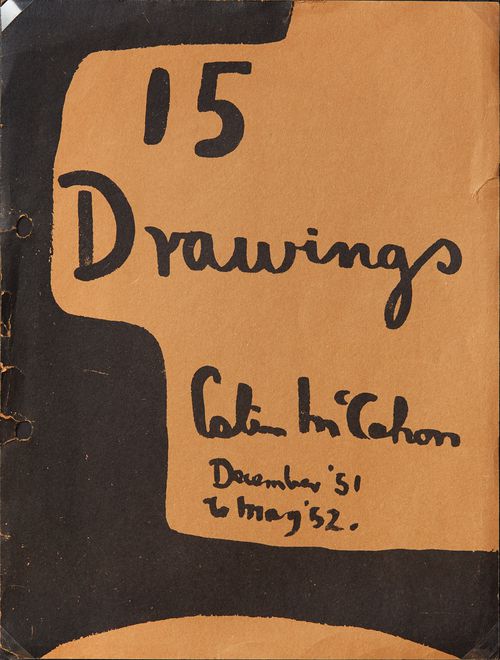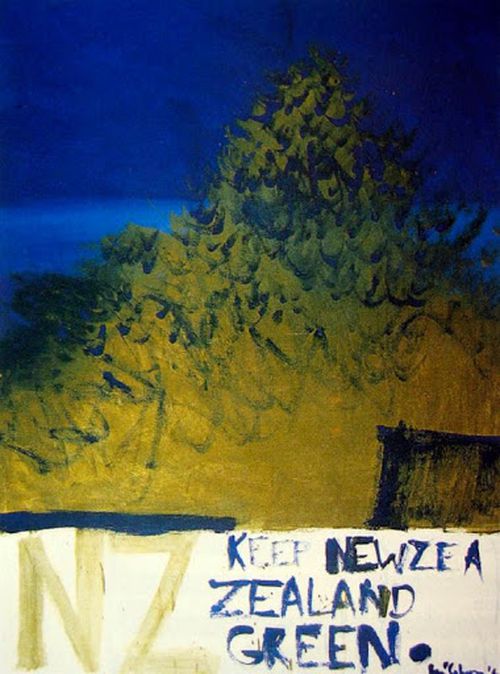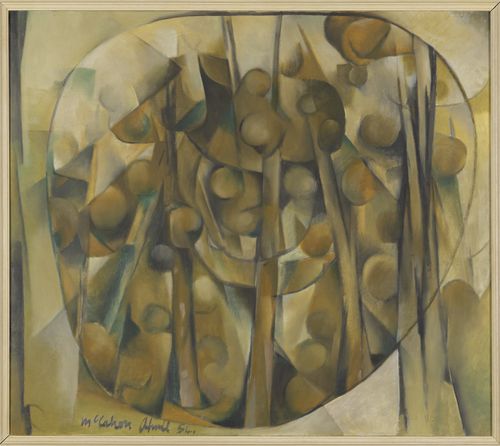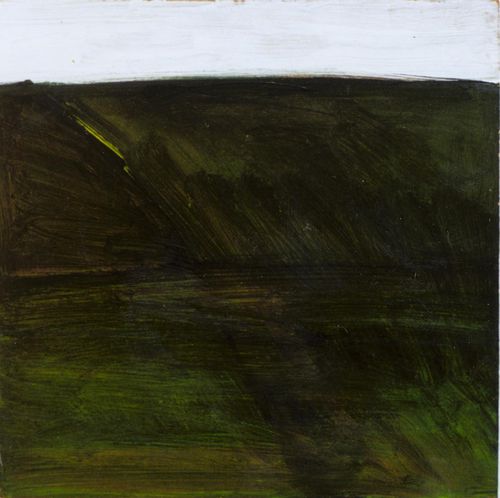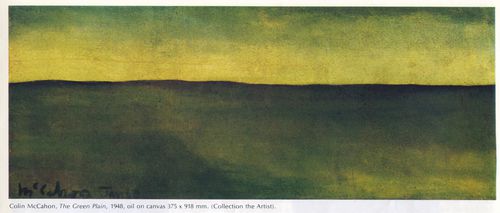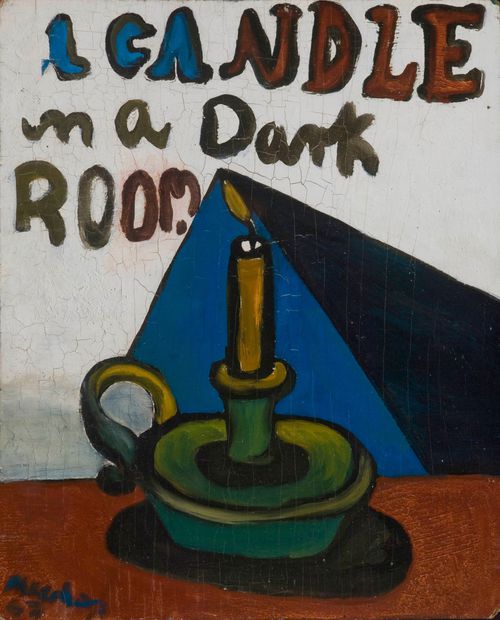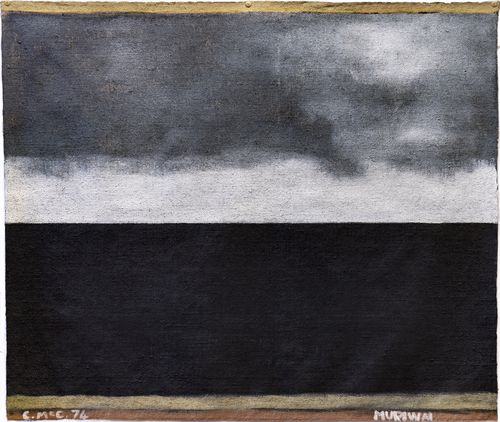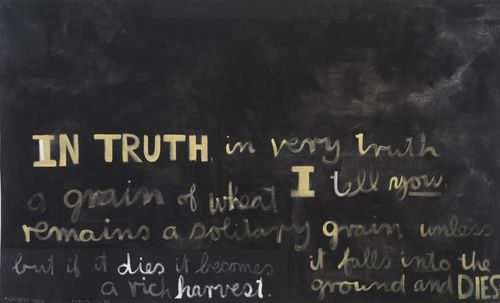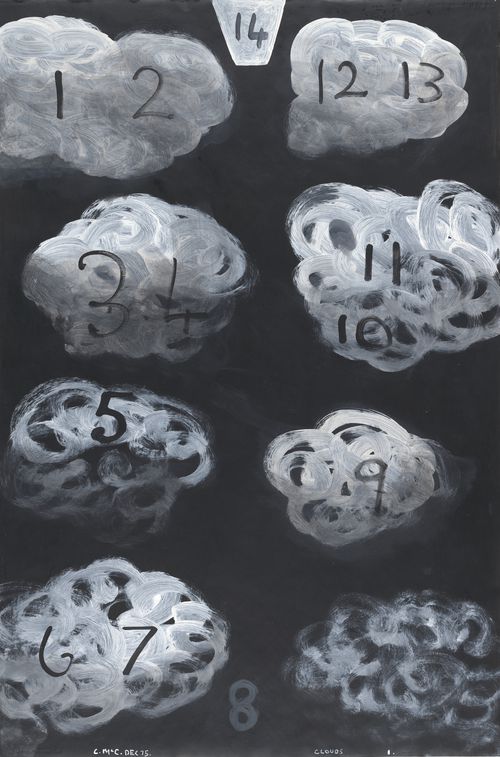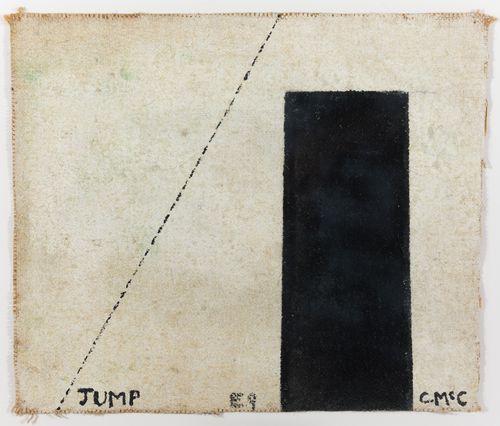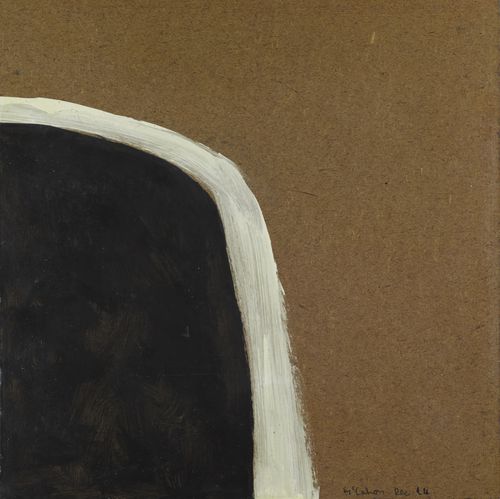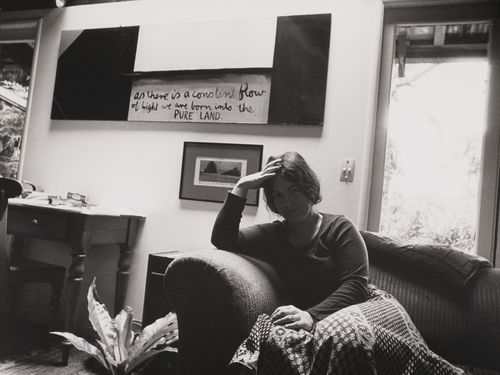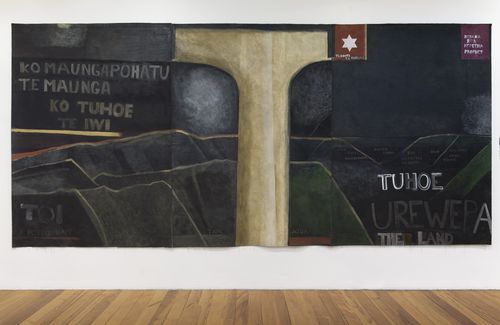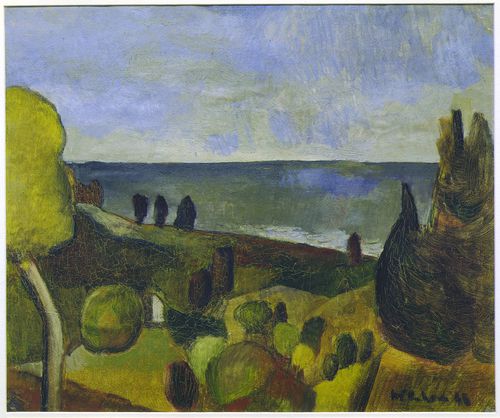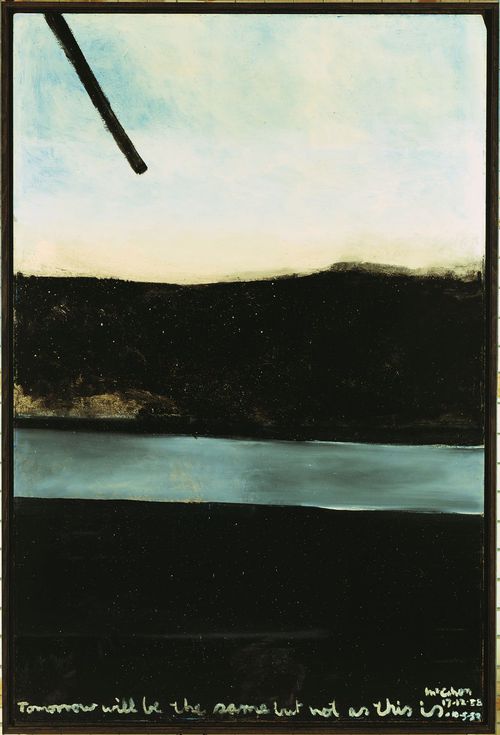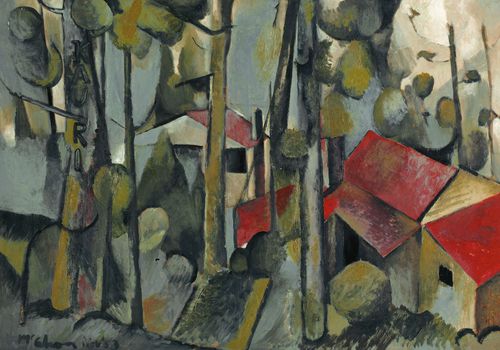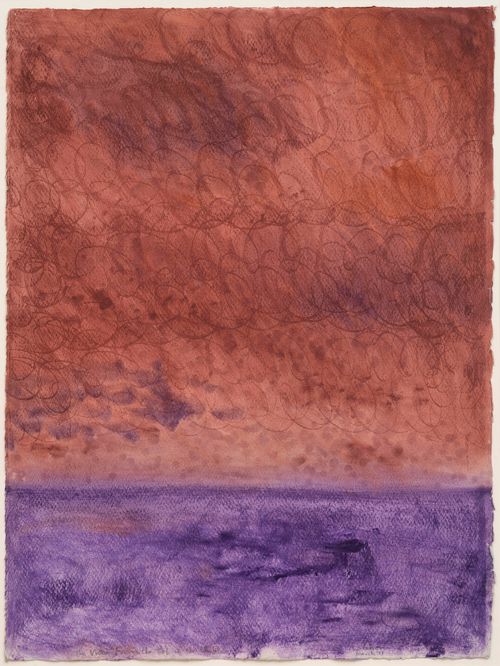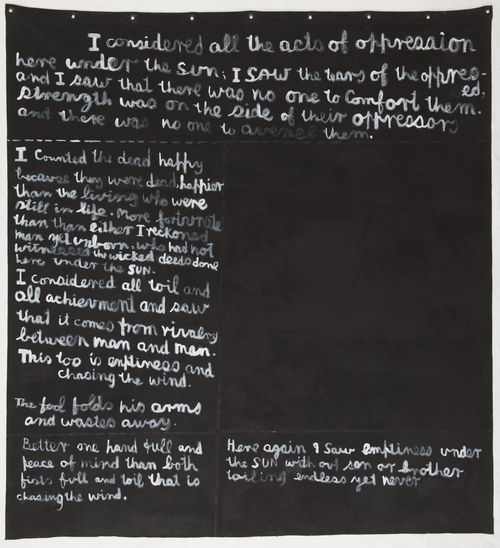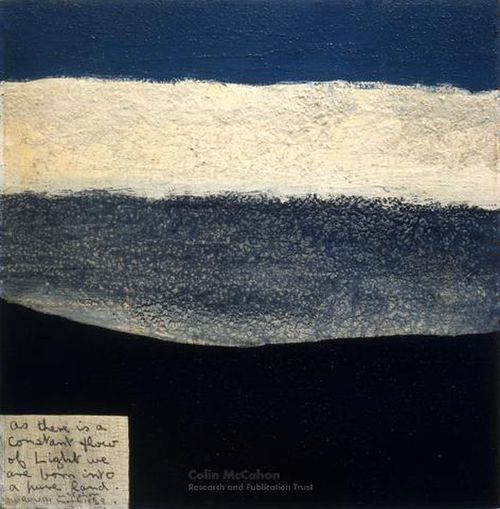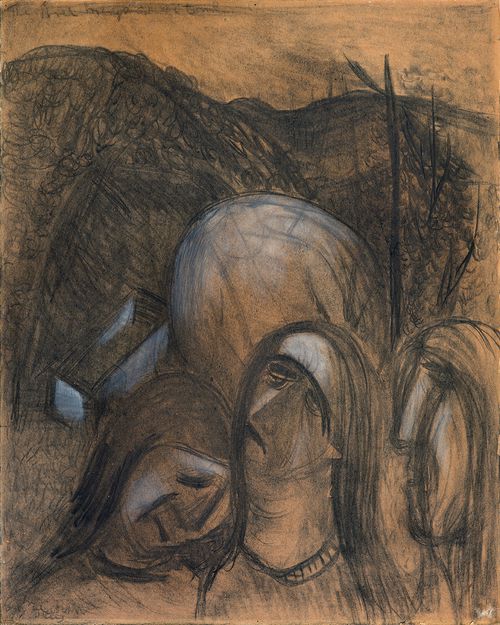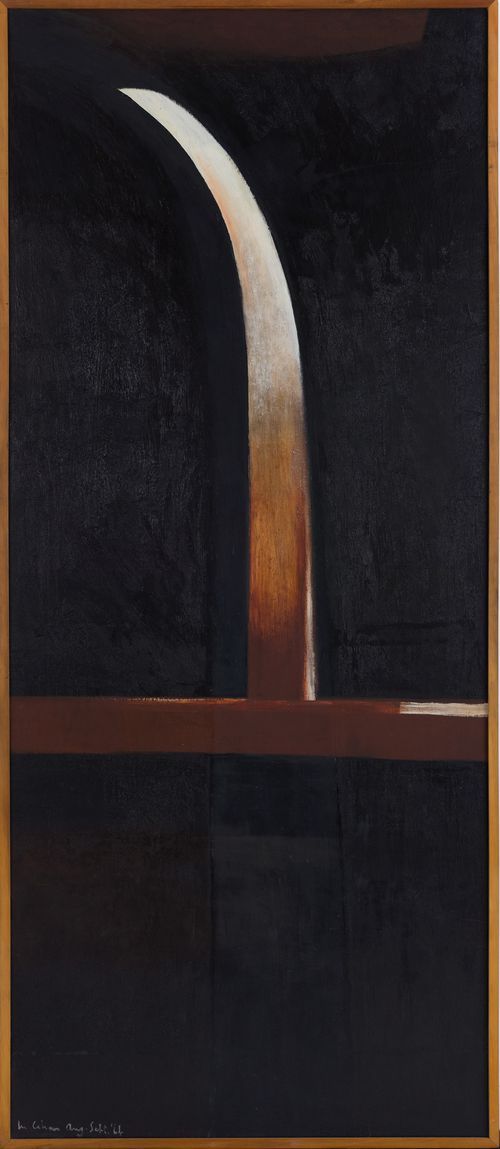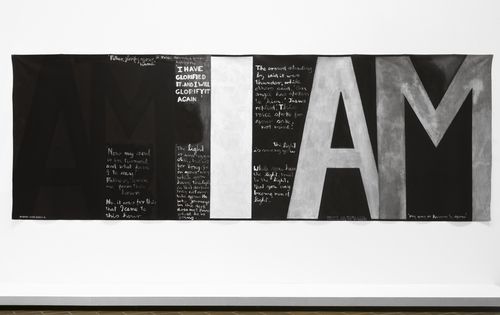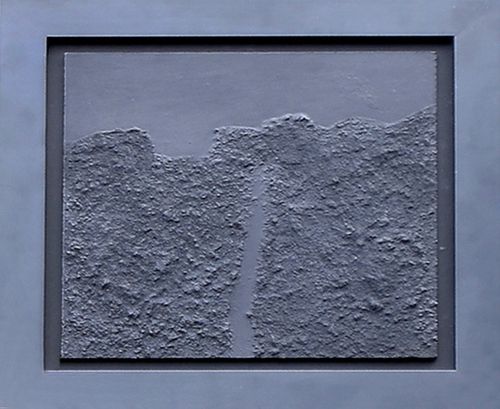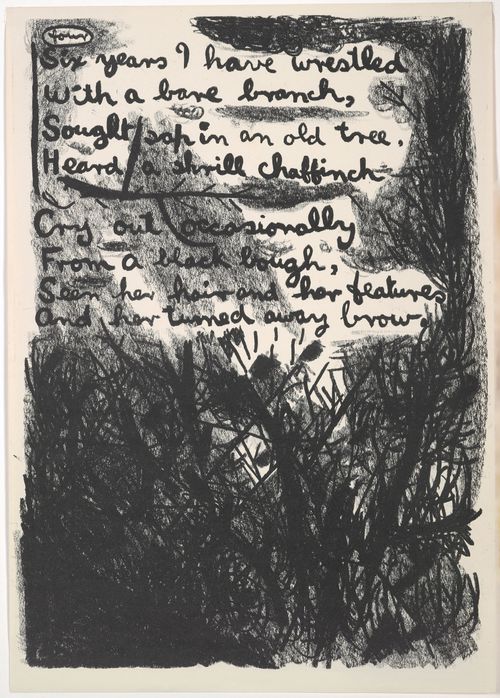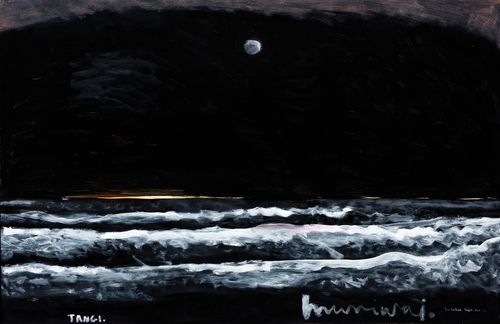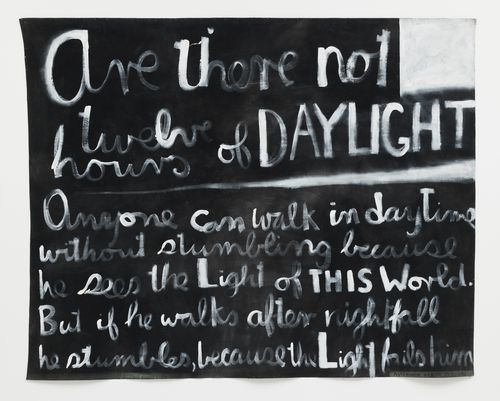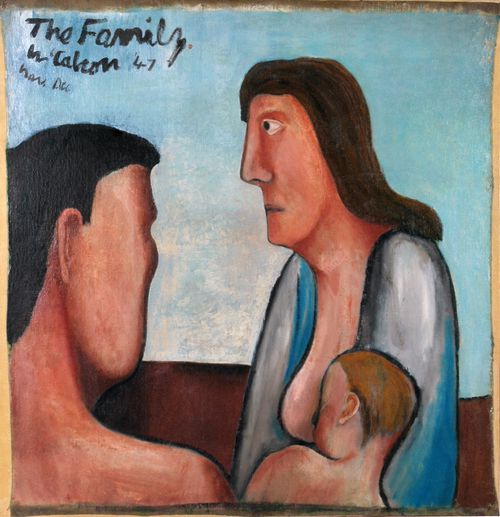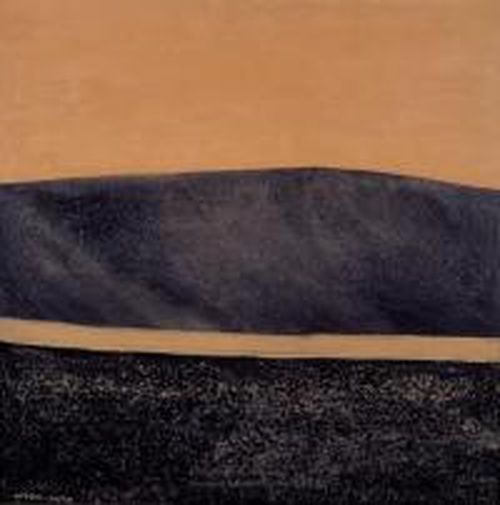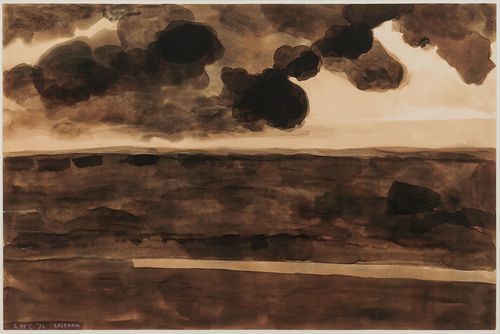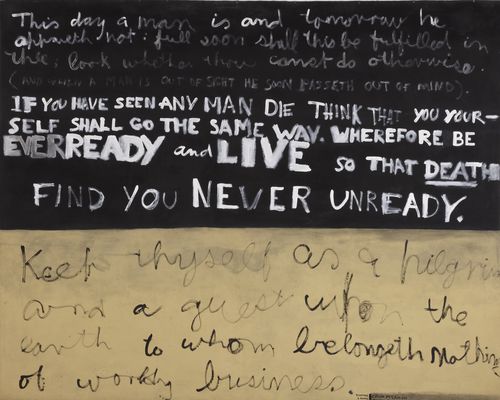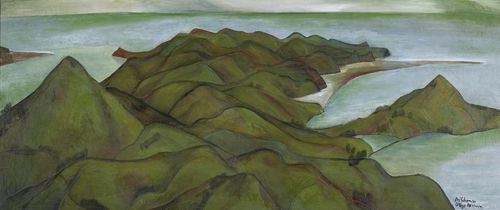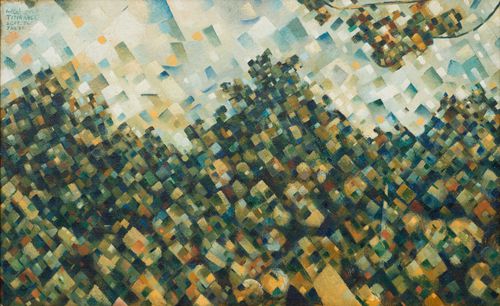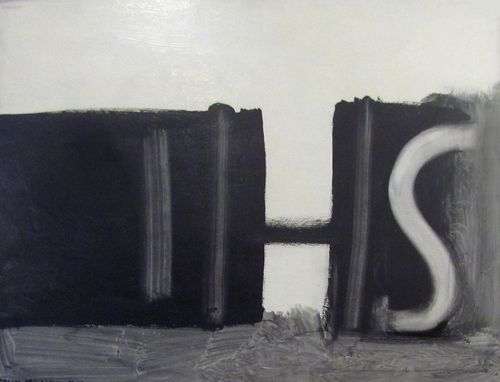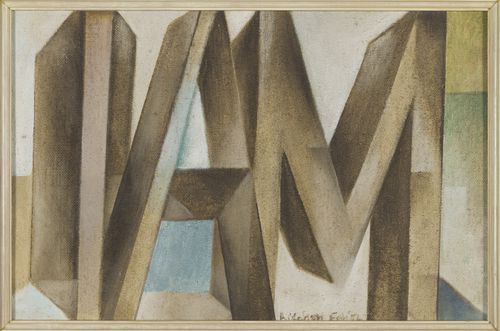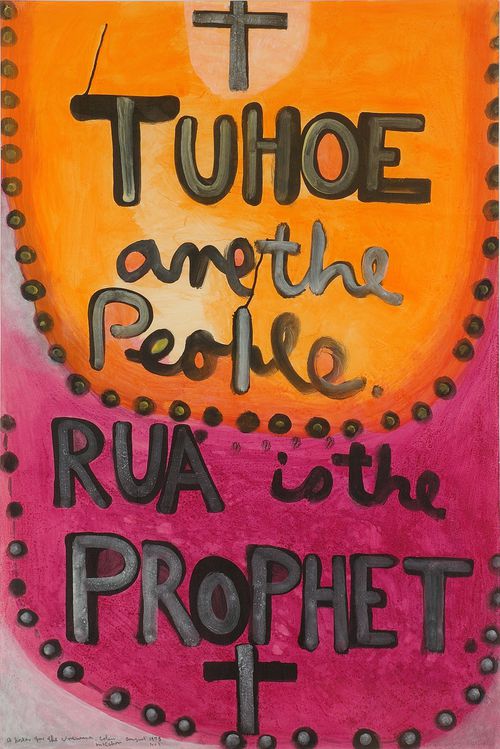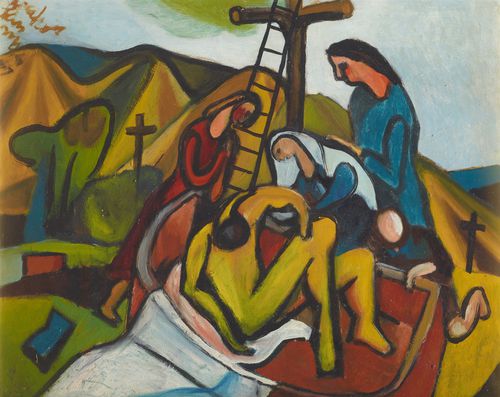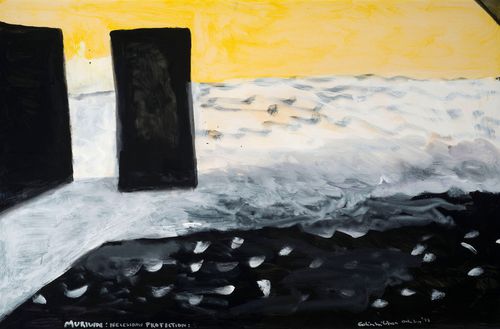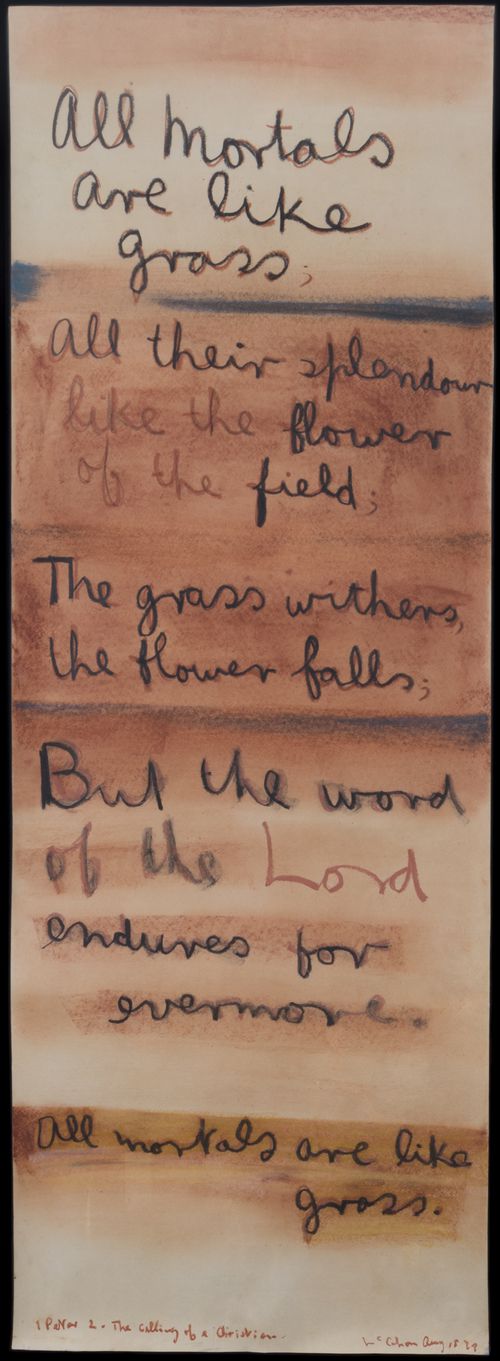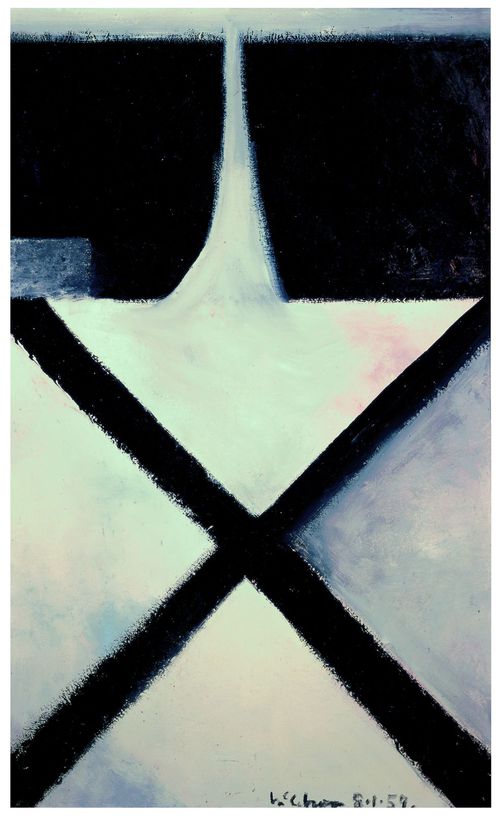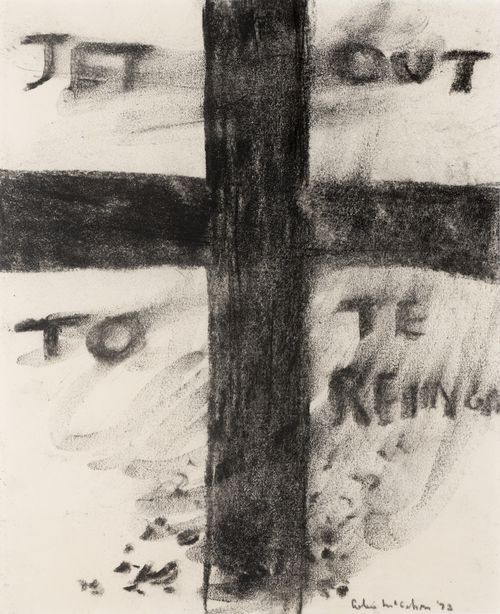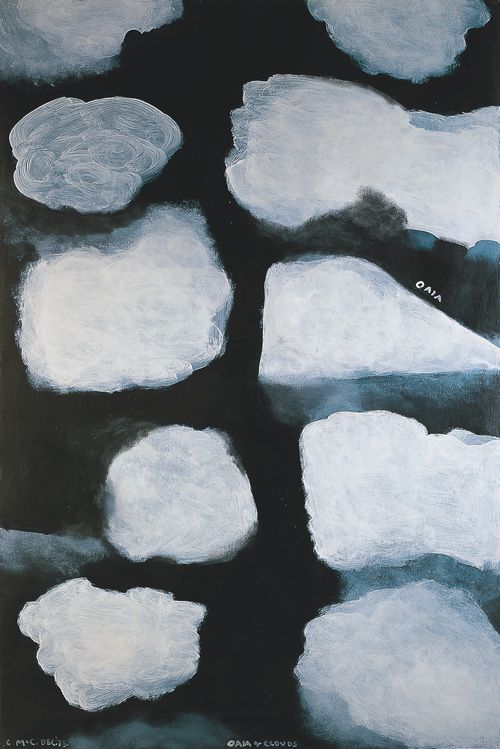Jump E9
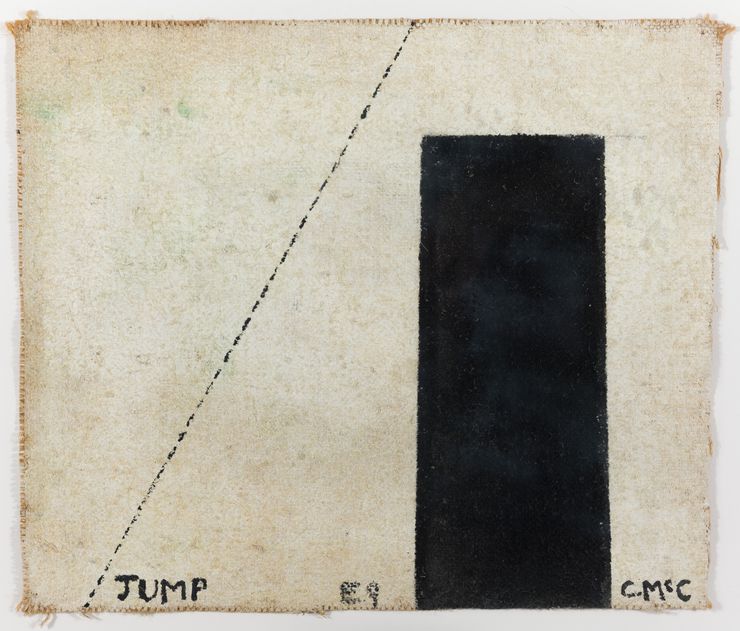
Colin McCahon, Jump E9, 1974, synthetic polymer paint on unstretched jute canvas laid on board, 263 x 307mm. Collection of Auckland Art Gallery Toi o Tāmaki, courtesy McCahon Research and Publication Trust.
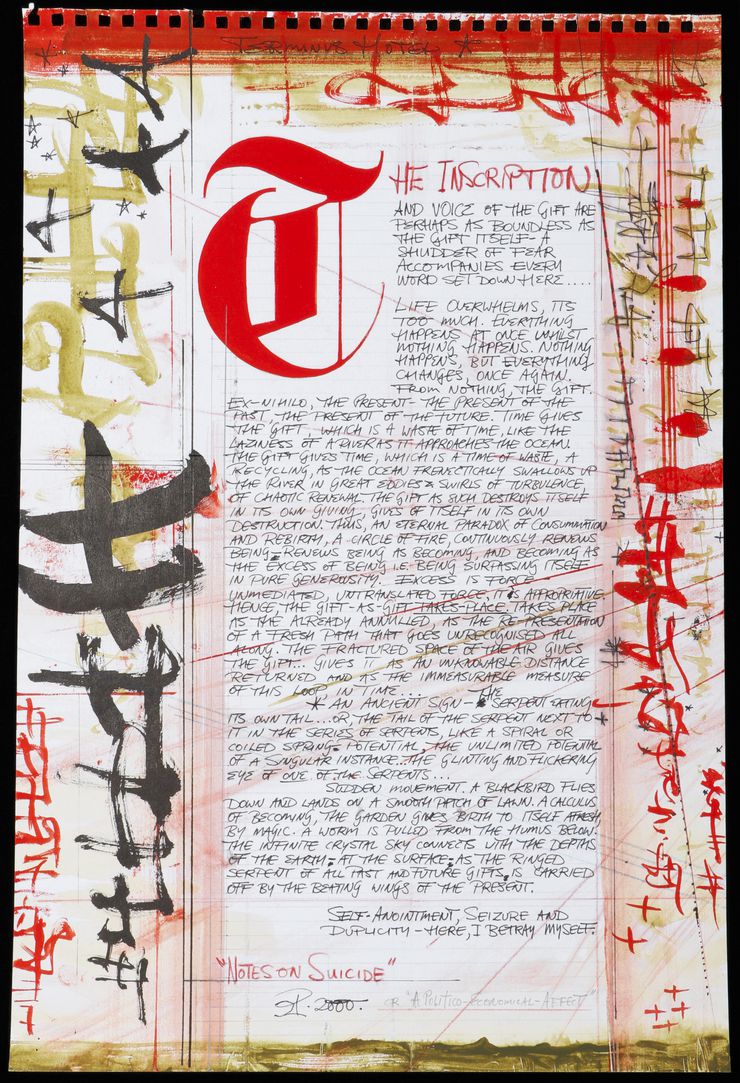
Ralph Paine, Terminus Hotel: Notes on Suicide, or A Politico-Economical Affect VI, 2000, gouache, ink, and pencil on paper, 380 x 255mm.
Ralph Paine
And finally he leaps & lo, he finds himself, he finds that he is no less and no more than his old self. He finds that he is in the same old world with Mount Fuji snow covered & the Pacific Ocean washing the Tago-no-ura Beach as in the days of Yamabe No Akahito, the poet.
—D. T. Suzuki
Out on the West Coast, roughly ’71 to ’77, McCahon fell somewhat silent (at Muriwai he will not need so many words), aligned his thought along a Turner-Rothko axis, walked a lot, became sage-like (here the brush will double as a staff, the studio as a hut), constructed a heterodox pedagogy, studied the Māori prophets, sought inspiration in Eastern scroll painting, re-intensified his experiment in series … Out on the edge of the art pack, on a borderline composed of new becomings—becoming-bird, -cloud, -rock, -beach, -whale, -ocean—McCahon cast aside many series (the series never seem to come to an end, they will have to be abandoned), a veritable series-series including Jump (1974), thirty or so minimalist studies in Zen-existentialism, little diagrammatically expressed puzzles of difference and repetition, either/or, both/and. Do the dashed life-lines travel up or down, go left-to-right or right-to-left? Will my answer be the same for the series as a series, or only for some of the paintings? What are these dark towers that the dashed life-lines sometimes touch, sometimes don’t, or that the lines sometimes travel across the top of and sometimes don’t? Why in Jump E25 is there no tower? And so on.
My series Terminus Hotel: Notes on Suicide, or A Politico-Economical Affect (2000) implicates McCahon’s Jump series. Comprising seventeen gouache, collage, ink, and pencil works on paper, all 38 x 25.5 cm, some horizontally aligned, others vertically, Terminus Hotel was first exhibited as a Cuckoo Project in 2001 at Arch Hill Gallery, Auckland and subsequently in 2005 at Ramp Gallery, Hamilton. I know of two Terminus Hotels, one in Picton, the other in Wellington. A terminus is the end of the line. But it’s also a sign marking a boundary, a border to be crossed—or not. Because it is sheltering potential changes to be made, new beginnings, rebirths, migrations, a Terminus Hotel is that place where we rest up before making a further leap. It’s a kind of limbo, a stopping place but also a relay point, simultaneously room, bed, and launching pad: see McCahon’s series Angels and Bed (1977). Yet caution here, there’s a twist, perhaps best expressed by a twofold question: how to avoid arriving at the Terminus Hotel too soon and thus losing the journey’s momentum; or leaving too late and missing the vital connections?
Neo-Baroque in style, there’s a lot going on in Terminus Hotel. First, a sequence of texts runs throughout, some composed by me, some by others, which for the most part travel somewhat esoteric vectors in search of a Gift-as-Such, vectors that swept me away following Victoria University’s 1999 sale of McCahon’s painting Storm Warning (1982). This is the event of the series, the sale for profit of a gift and the subsequent fallout in the art scene and beyond. But overlaid onto that, mainly because termini play such a decisive role in geo-political ordering, there are sketched projections of the contemporary city, the generic city: Terminus Hotel consists of both a series of points of view composing a singular city, and a multiplicity composed of singular points of view on a series of different cities. And related, there are references to cinematic techniques (jump-cuts, pans, zooms), but also to the concept of World-Money, tagging and Eastern brush script, a summer holiday on the Northland coast, and the pilgrimage and place of reading in the time that remains …
